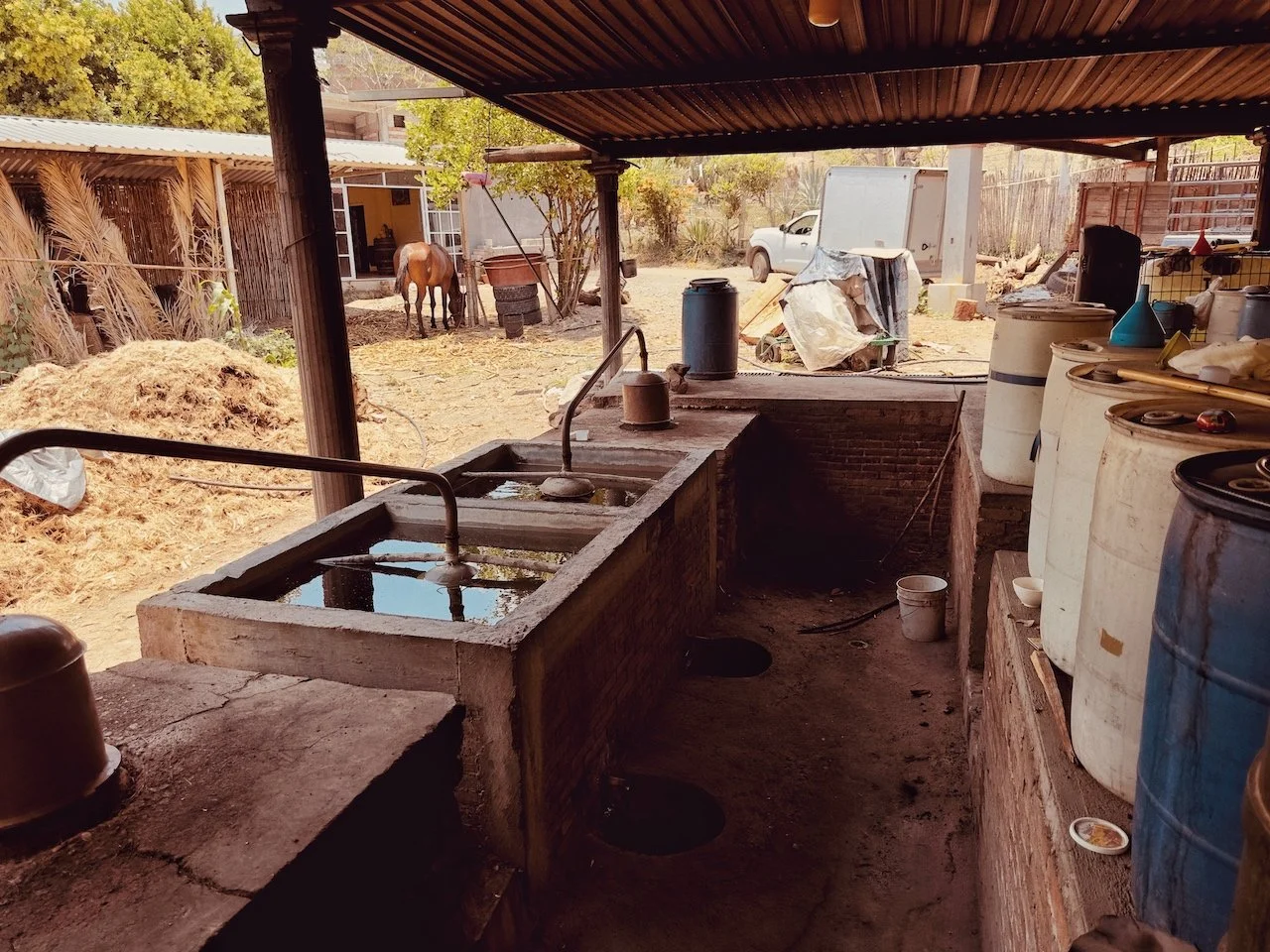Our Process
Nursery
Agaves require many years to reach maturity. We care about the future of Mezcal and that's why we are proud to uses cultivated agaves for our production. Historically wild agaves are now planted. This shortens the maturity period, which not only conserves water but also ensures an ample supply to meet the growing demand.
Wait
We patiently wait for the agaves to reach full maturity, a process that can span anywhere from 6 to 30 years depending on the varietal.
To obtain the highest quality Mezcal production from each plant it is important to have high sugar content in the piña (core of the plant), something that naturally occurs once the plant aproaches the end of its life cycle.
Harvesting young agaves not only yields inferior Mezcal but also deprives the plants of the opportunity to reproduce.
Harvest
Once mature, it's time for harvest, a process entirely done by hand using machetes, axes, and hammers. The spiky leaves (Pencas) are carefully chopped off to reveal the heart of the plant, known as the piña. This labor-intensive task is highly demanding, especially considering that some piñas can weigh up to 400 pounds.
Transport
We then transport the cut piñas to our distillery and begin the cooking process. It takes anywhere from 20 to 60 pounds of agave piña to produce a single liter of Mezcal. Our oven holds about 8 tons of agave. Thats a work done by hand!
These are the actual piñas used in our Lot #1 of Cirial.
Cook
The magueys are cut and placed into an earth pit oven. The oven is then buried and insulated with dirt and left to sit for a 4-day slow cook. This process caramelizes the sugars and imparts the distinctive smoky flavor of Mezcal.
Below is a video of our team loading piñas into the oven for our Espadín Lot #1.
Once the sugars are caramelized, the piñas retain a cooked brown color and become delicious to chew on; this is essentially agave nectar.
Crush
We use a stone tahona and a horse to crush the agaves into finer fibers, which helps accelerate the next step- the fermentation process.
Ferment
The crushed agave is transferred into pine tanks along with a mixture of well and spring water, where it will undergo natural fermentation. This process typically takes about 4 days, during which we continually taste it to determine when all the sugars have been converted to alcohol. Once it is no longer sweet, it is time to proceed to distillation.
Distill
All of our varietals undergo two distillations in copper stills. After the second distillation, the alcohol content can be around 50% alc. From there, we carefully we use distilled water to adjust the Mezcal to the appropriate alcohol level to best express the characteristics of each varietal.
Bottle
All of our bottles are hand-labeled and bottled at the distillery. From there we carefully pack our pallets and they are ready to be shipped around the world.
Maestro Mezcalero Don Clemente with a bottle of our Cuixe Lot #1.











